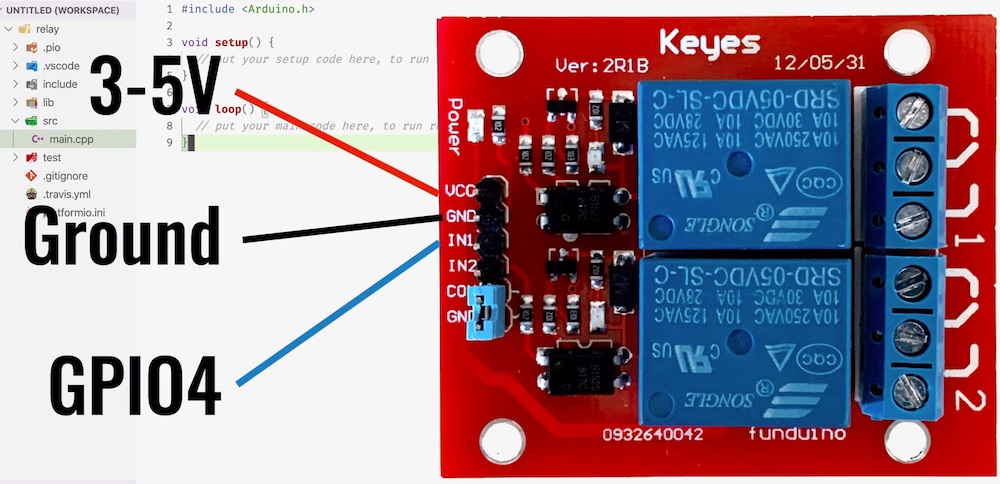Controlling a Relay Board
An ESP32 can only control low power peripherals (3V). To control higher powered devices, like a light or outlet, you'll need a relay board.
Disclaimer: please be careful when using a relay to switch mains voltage. Make sure that you know what you're doing, otherwise you could injure yourself.
To connect a relay, you need to have at least three wires: 3V (or 5V) and GND to power the relay board and an input pin for each relay you have.

This particular board has 2 relays, so it's got 2 input pins. Controlling the relays is relatively simple: putting power on Input pin 1 will turn the relay on. Cutting the power on that pin will turn it back off.
Here's a complete example of a program that toggles the relay every second:
#include <Arduino.h>
#define RELAY_PIN 4
void setup() {
pinMode(RELAY_PIN, OUTPUT);
}
void loop() {
digitalWrite(RELAY_PIN, HIGH);
delay(1000);
digitalWrite(RELAY_PIN, LOW);
delay(1000);
}
